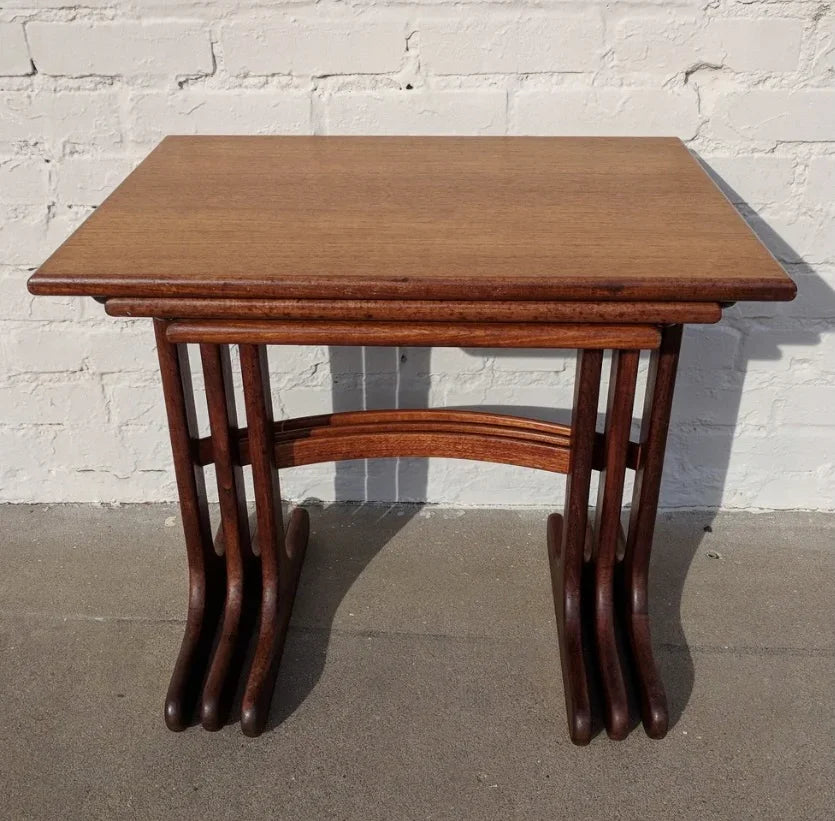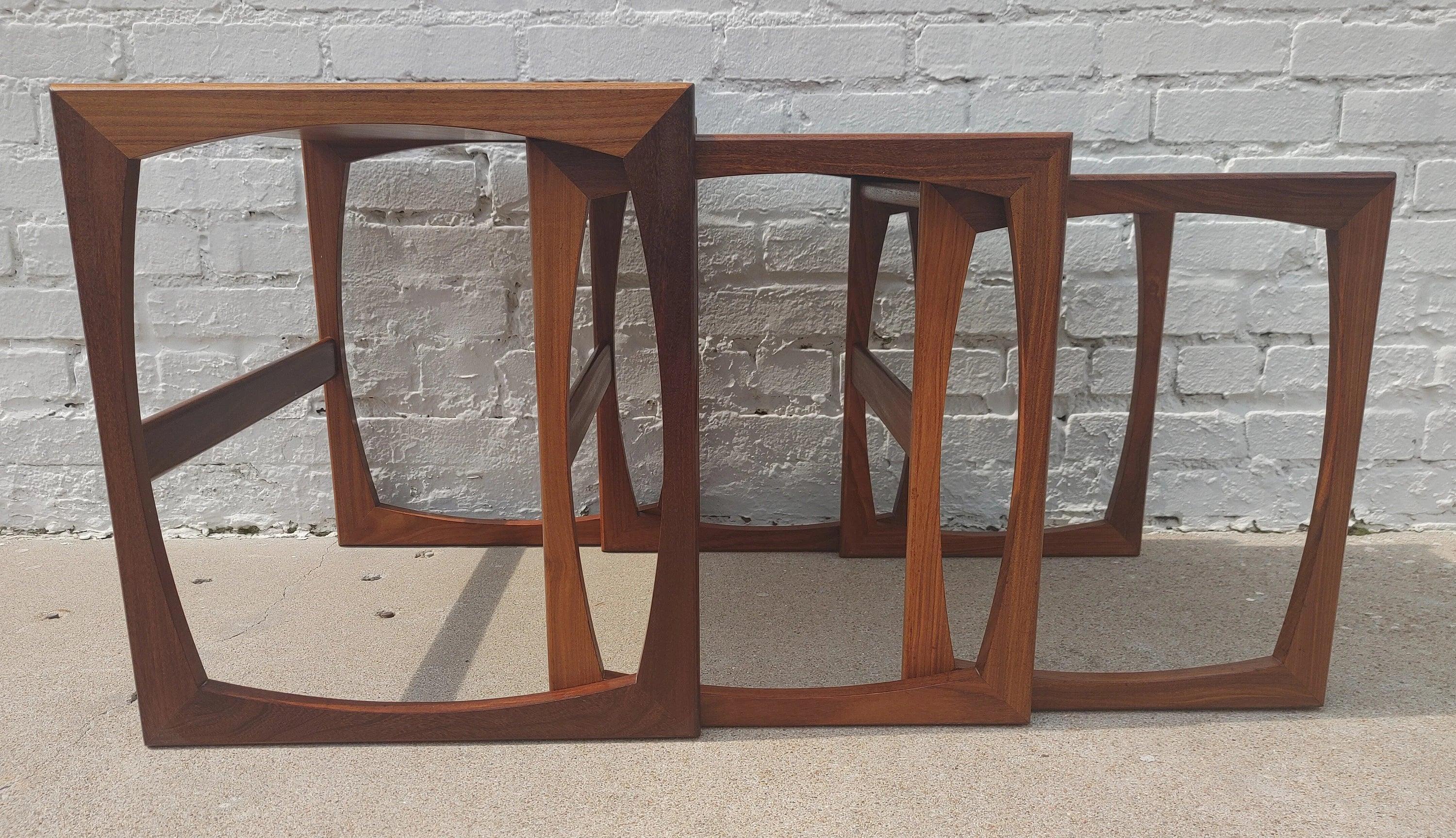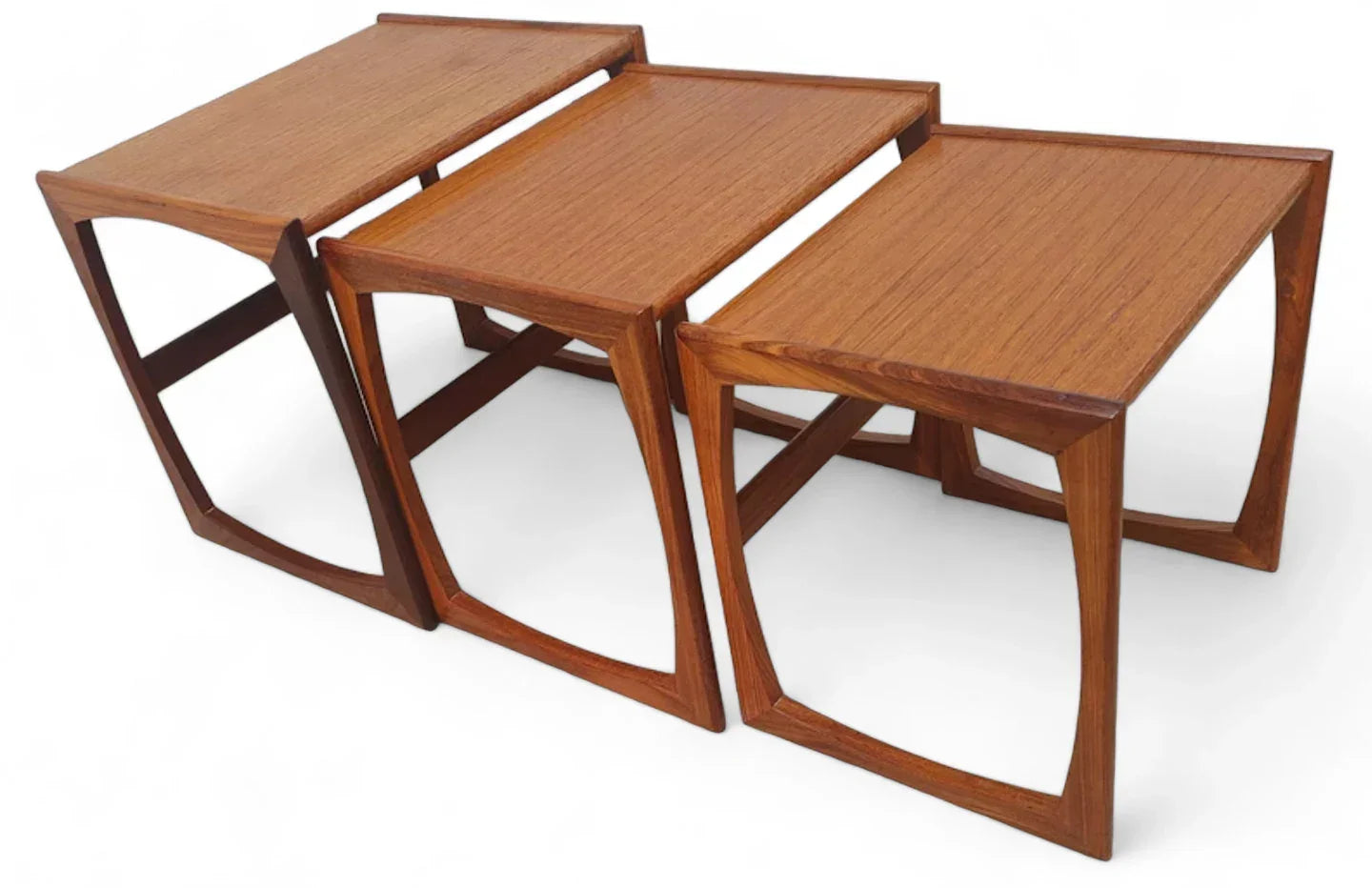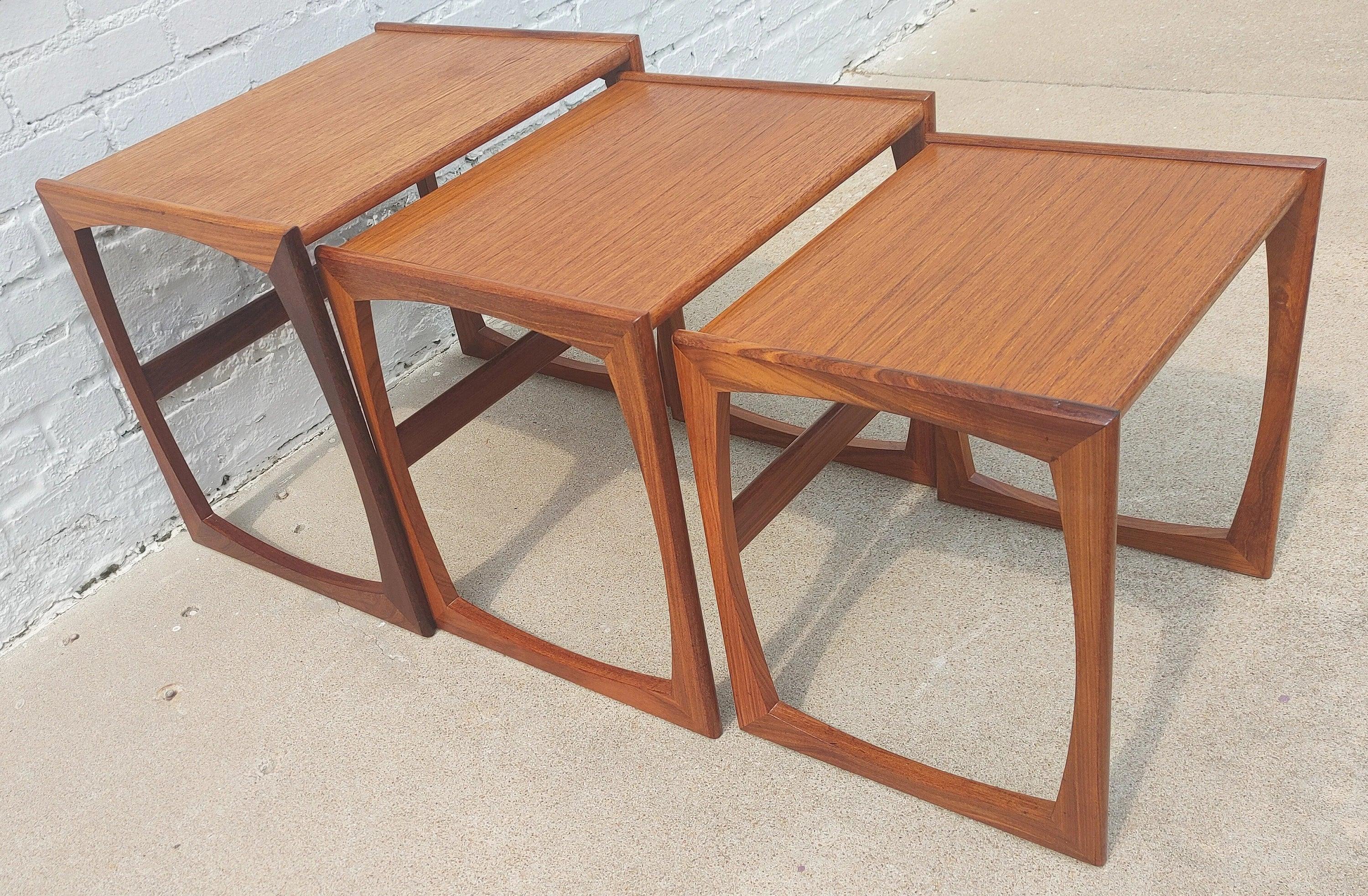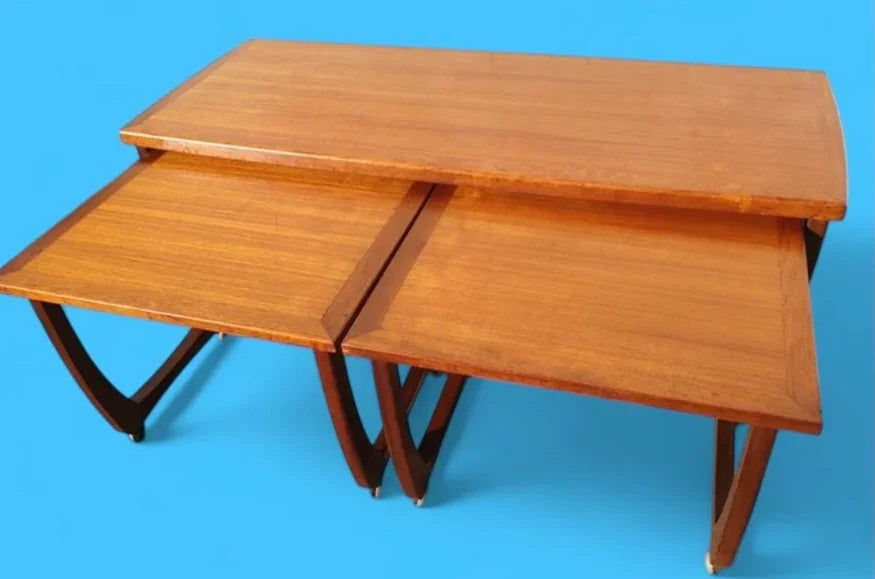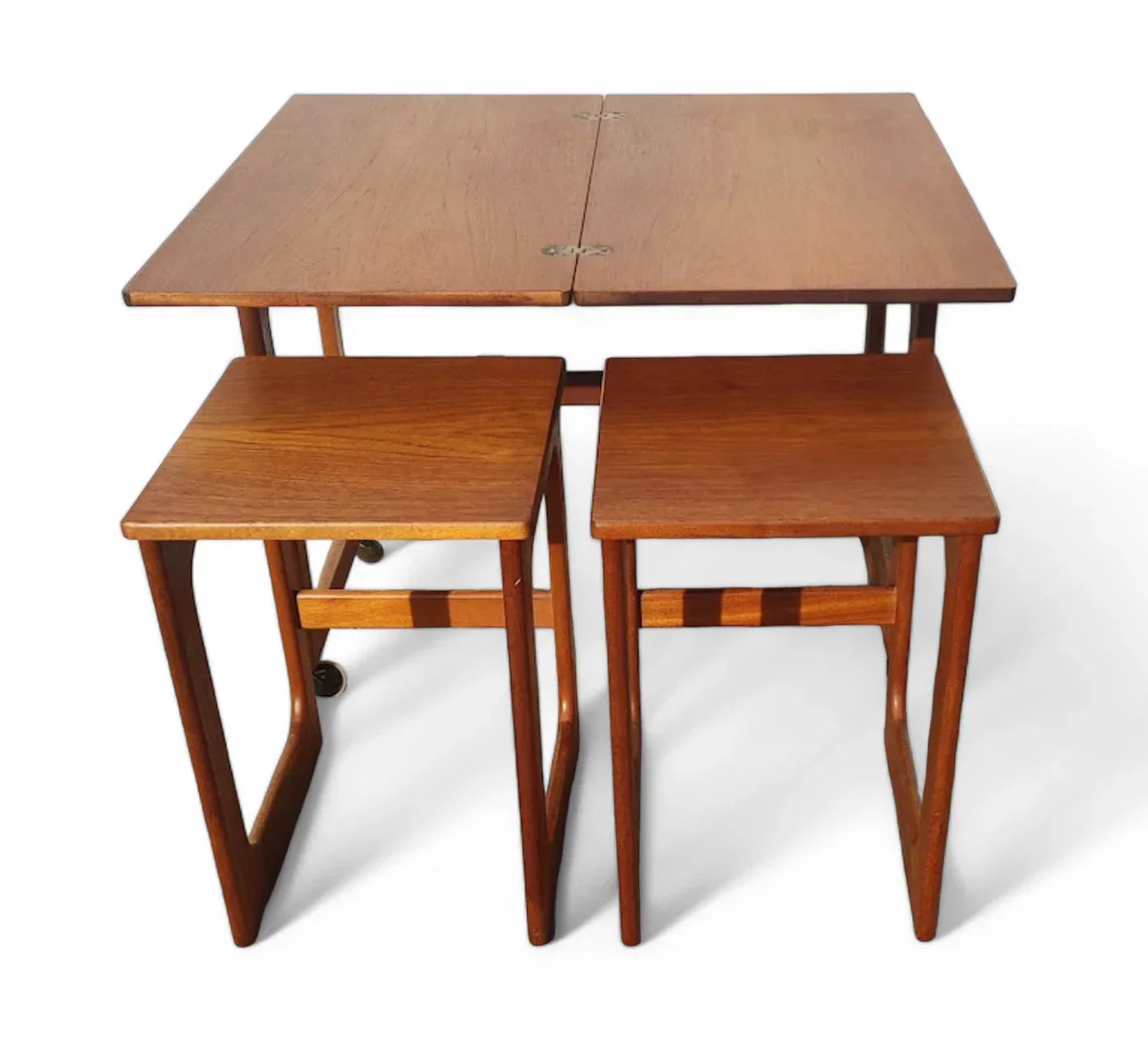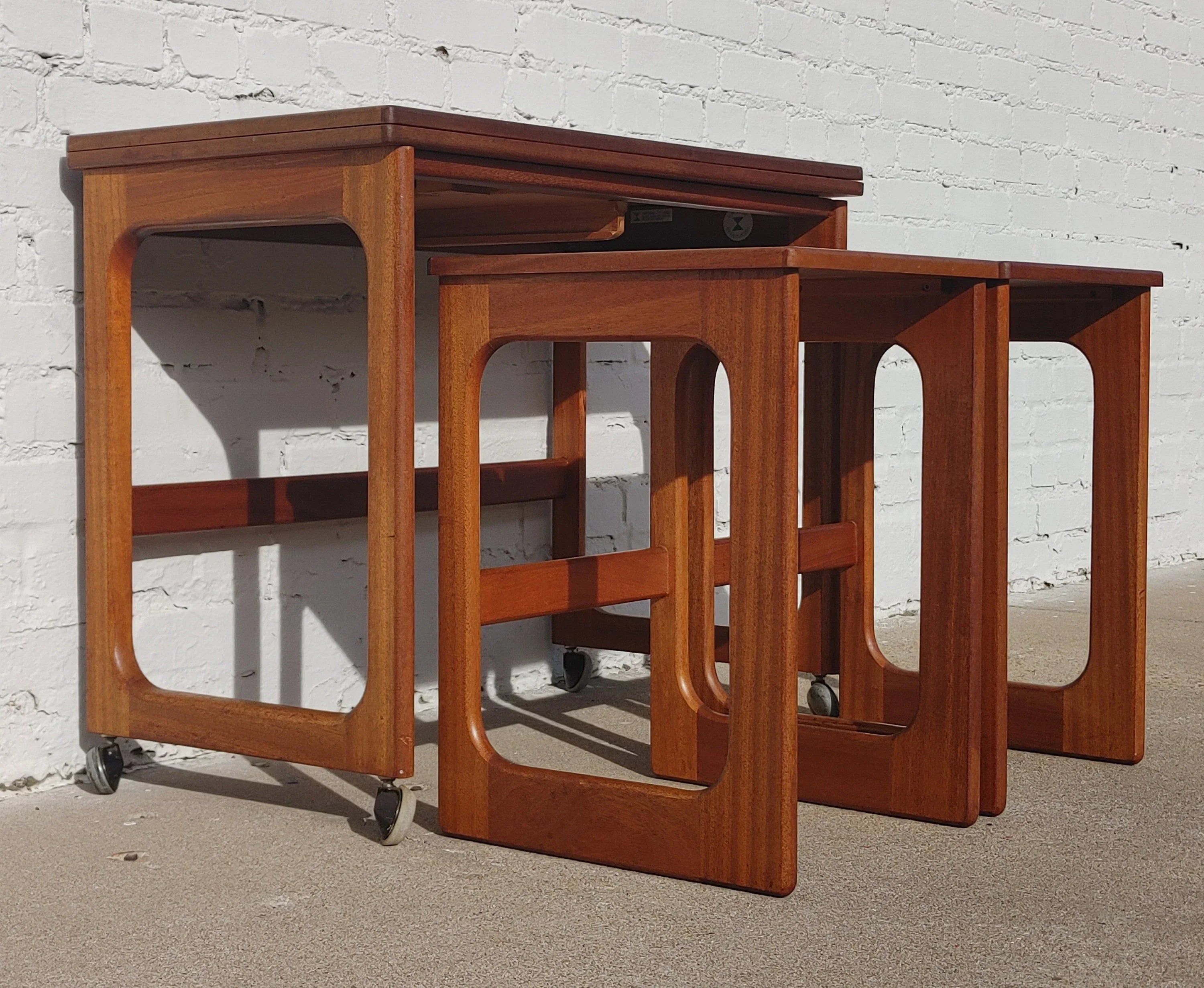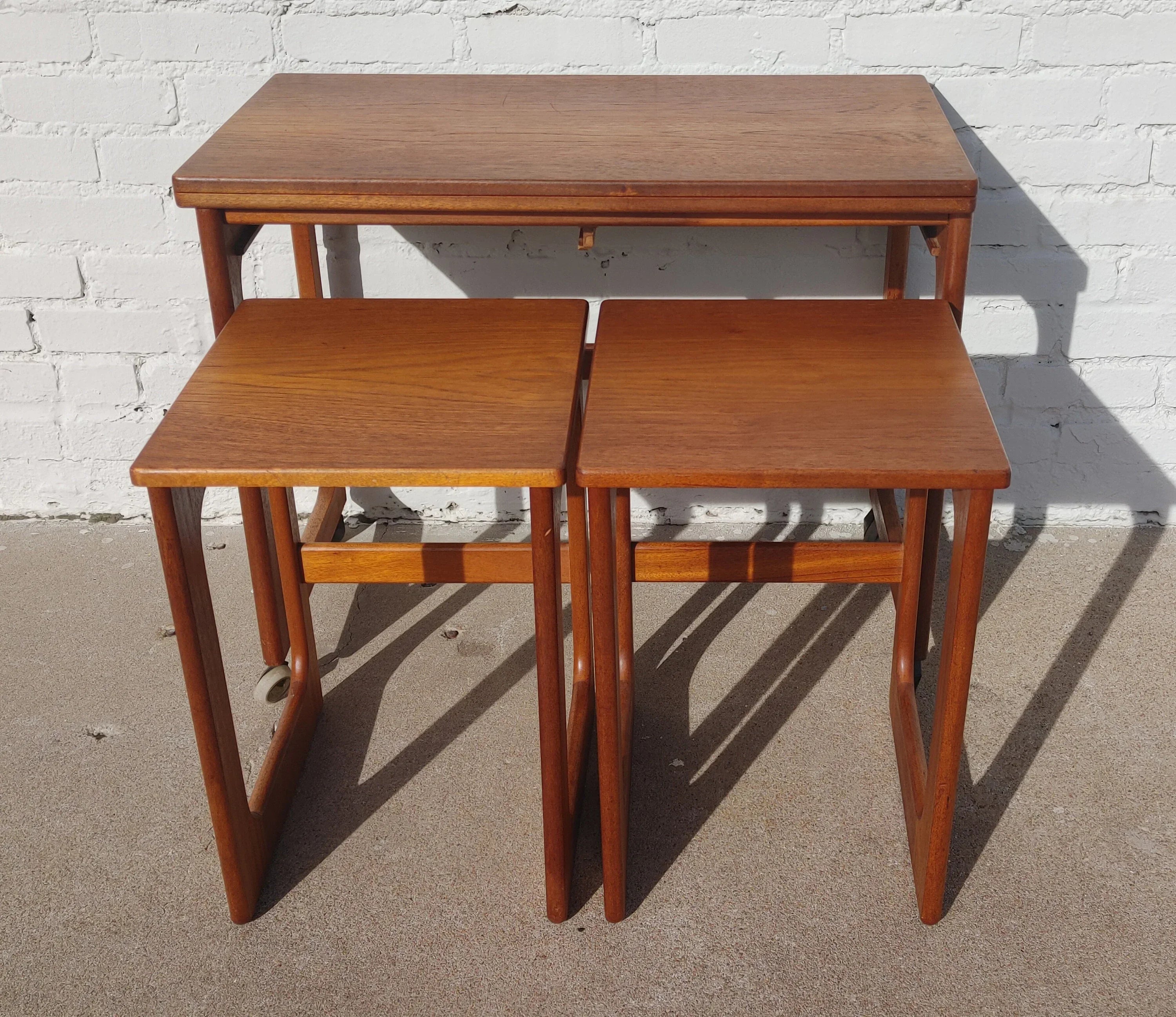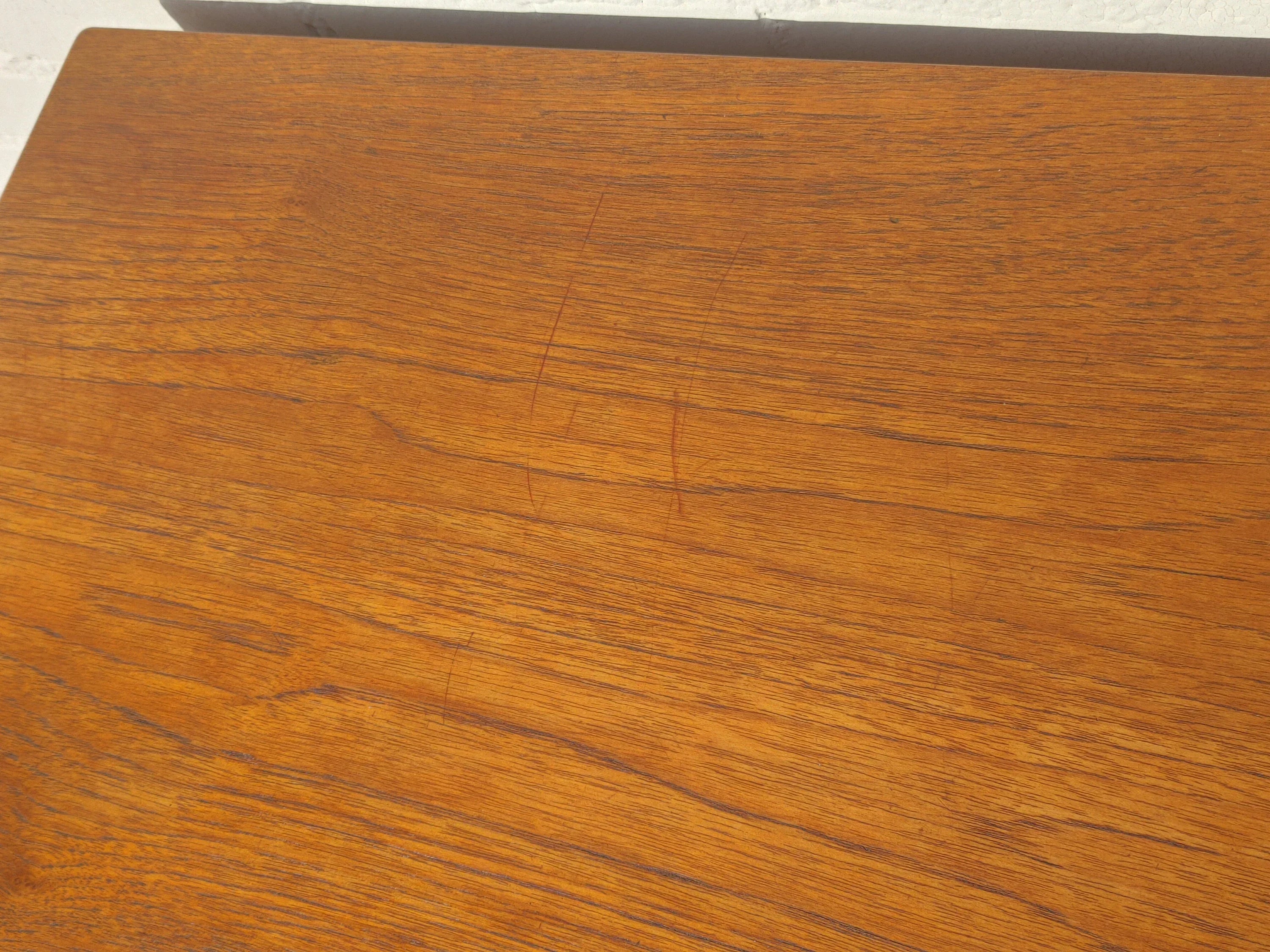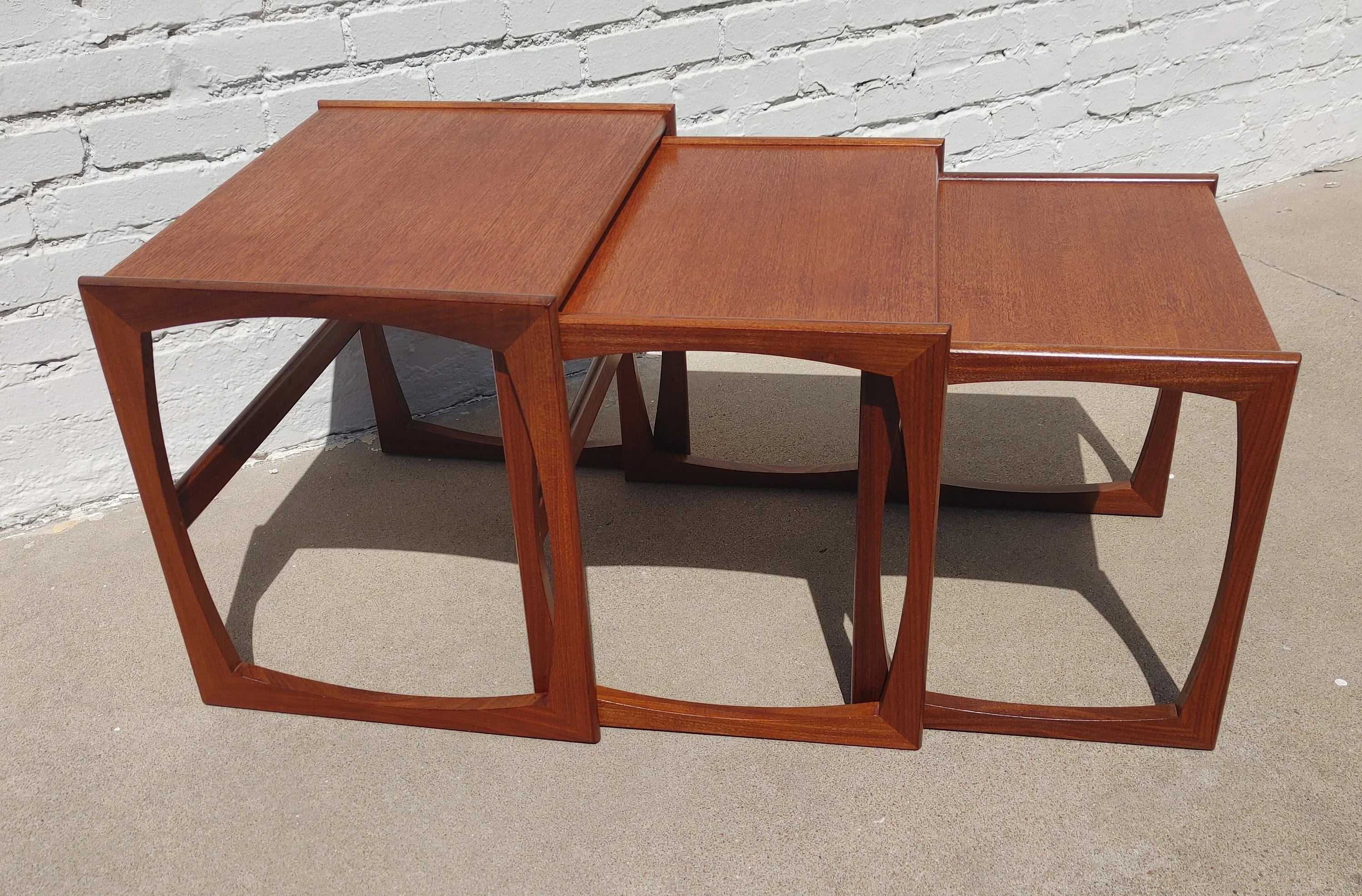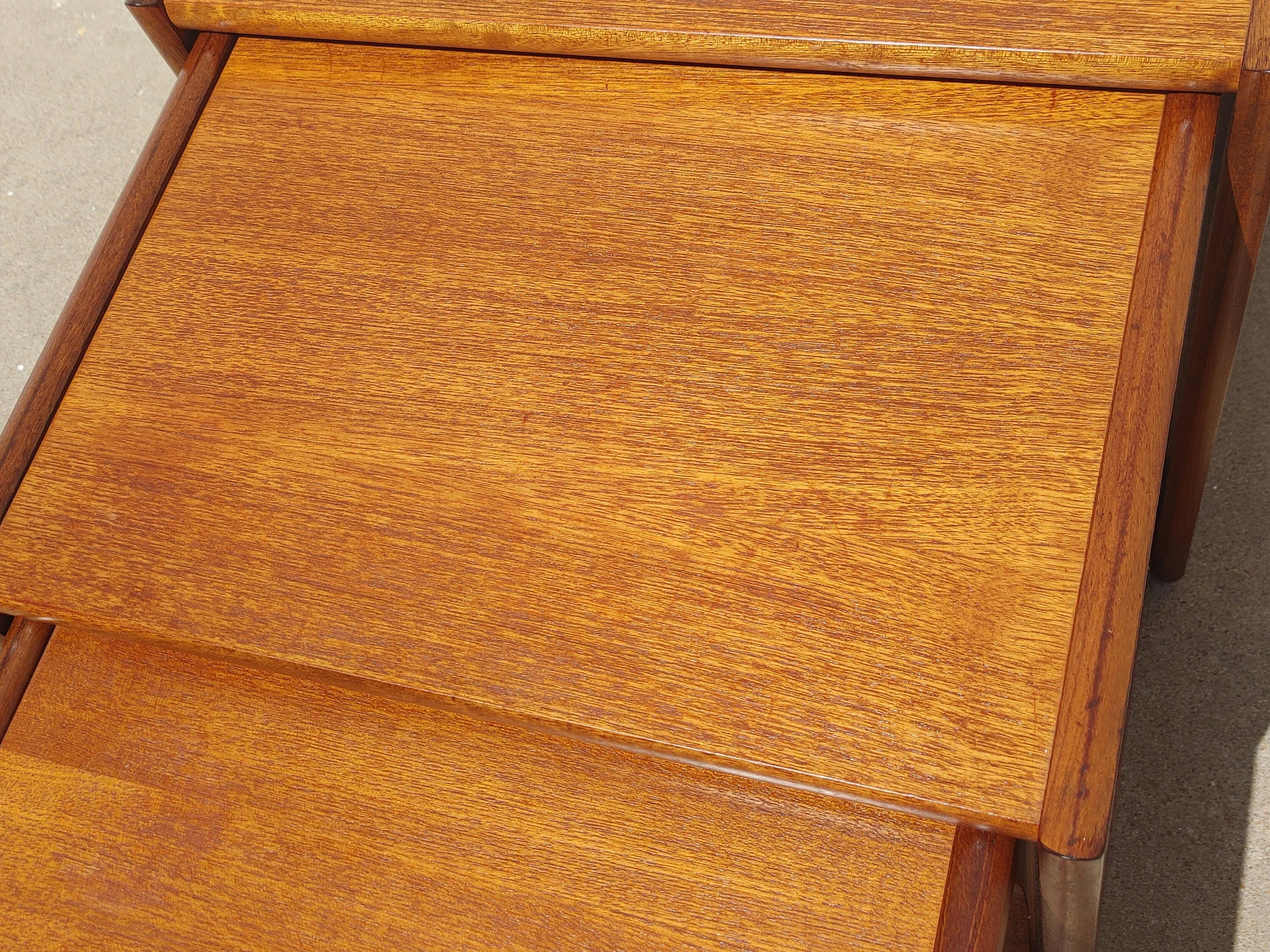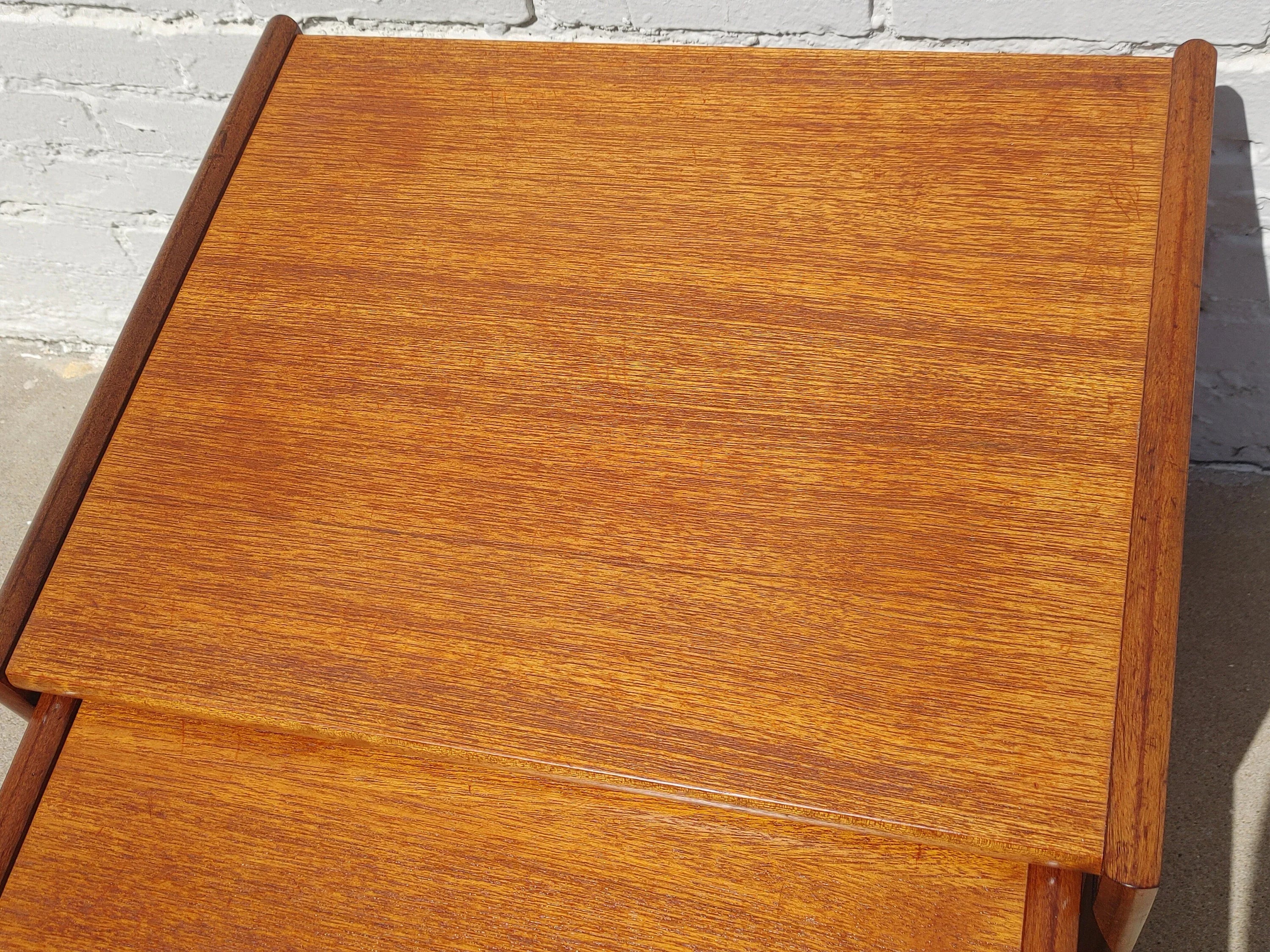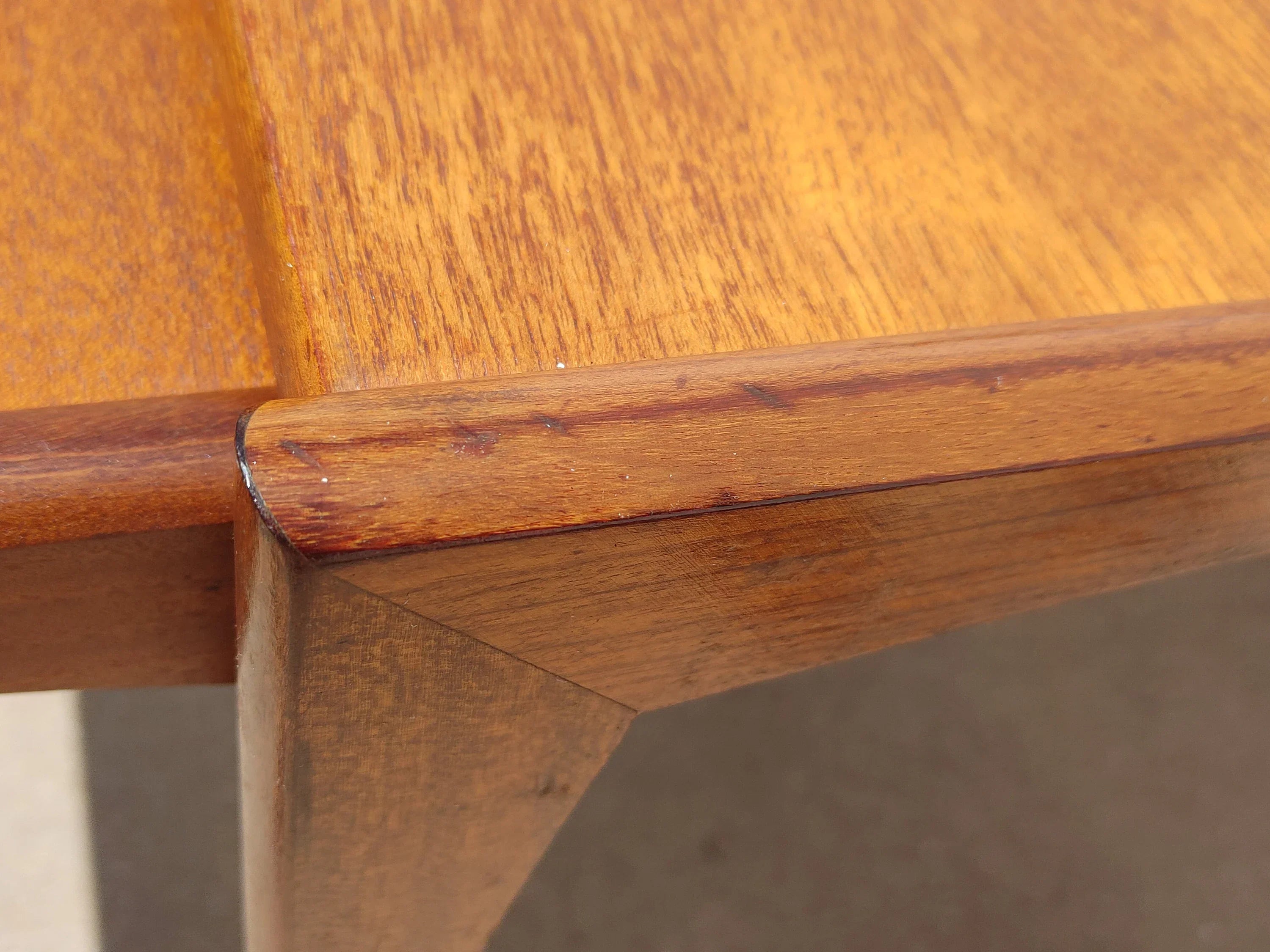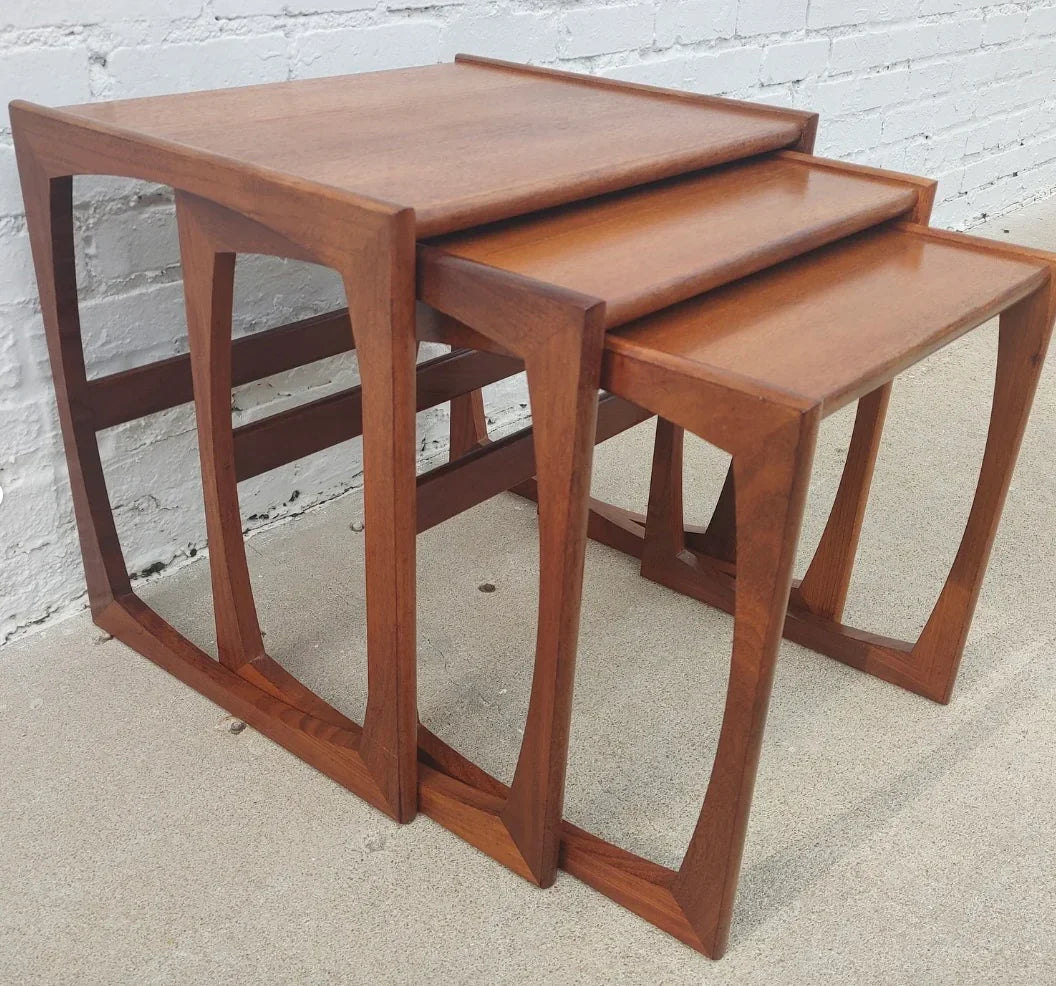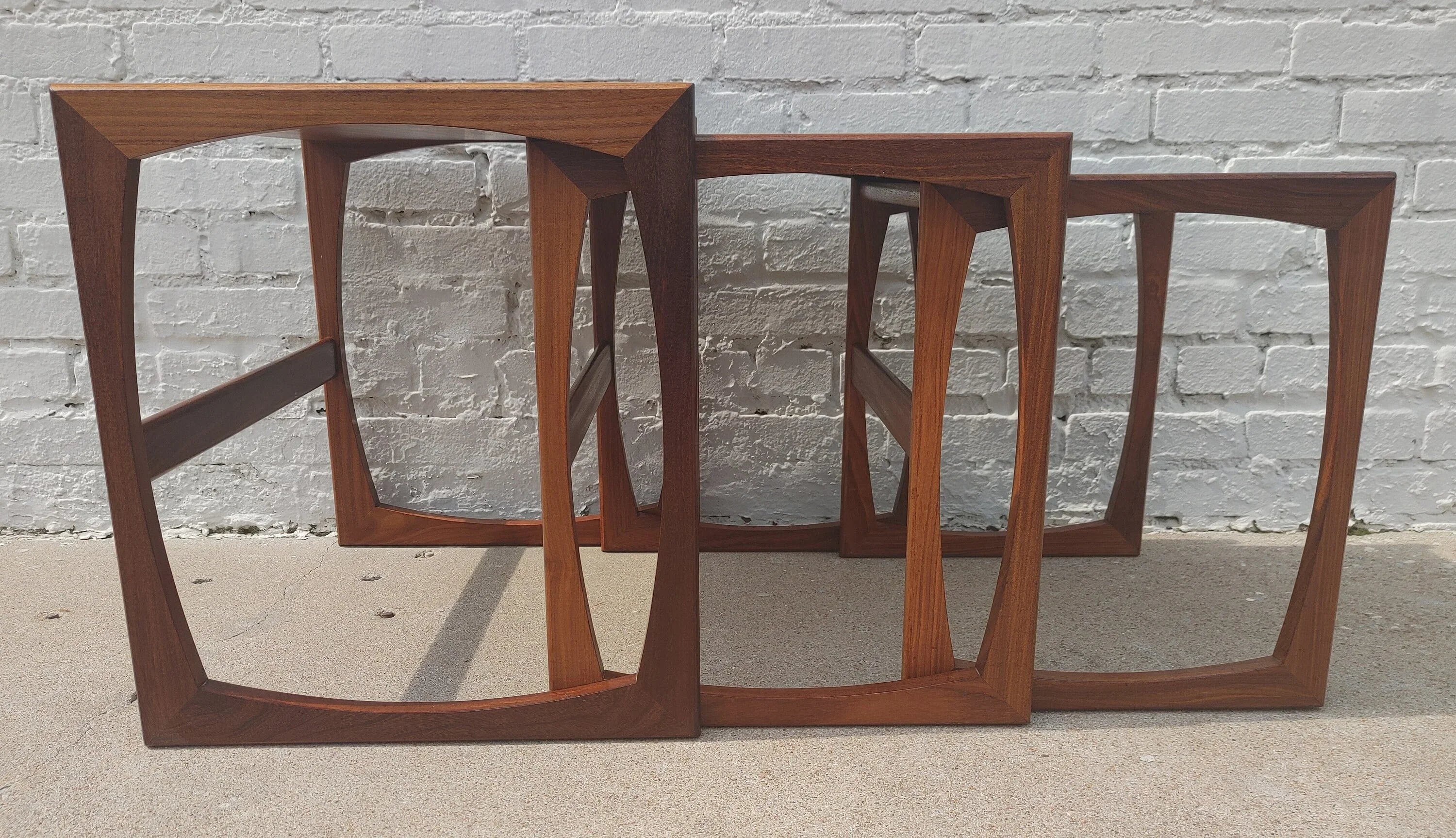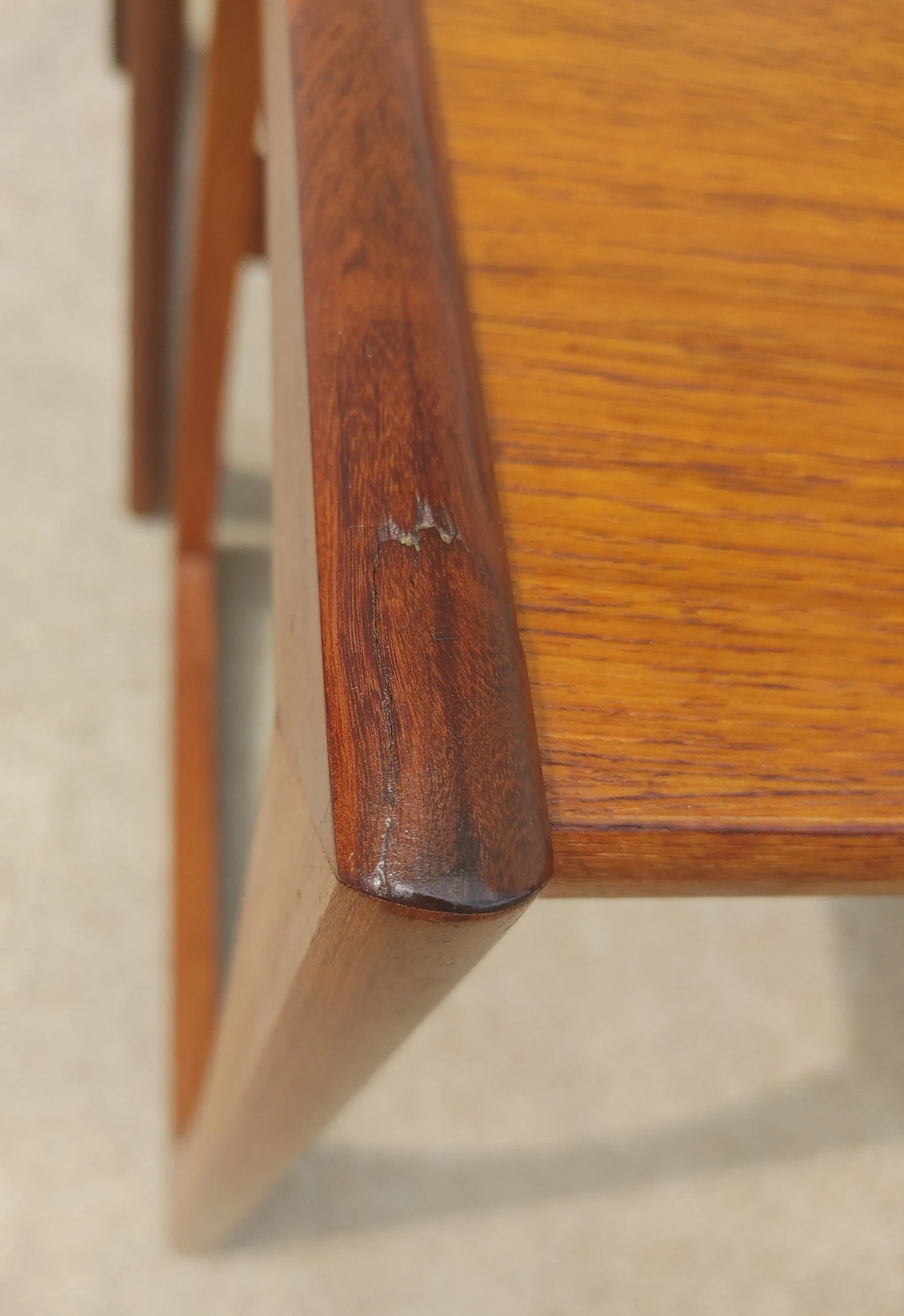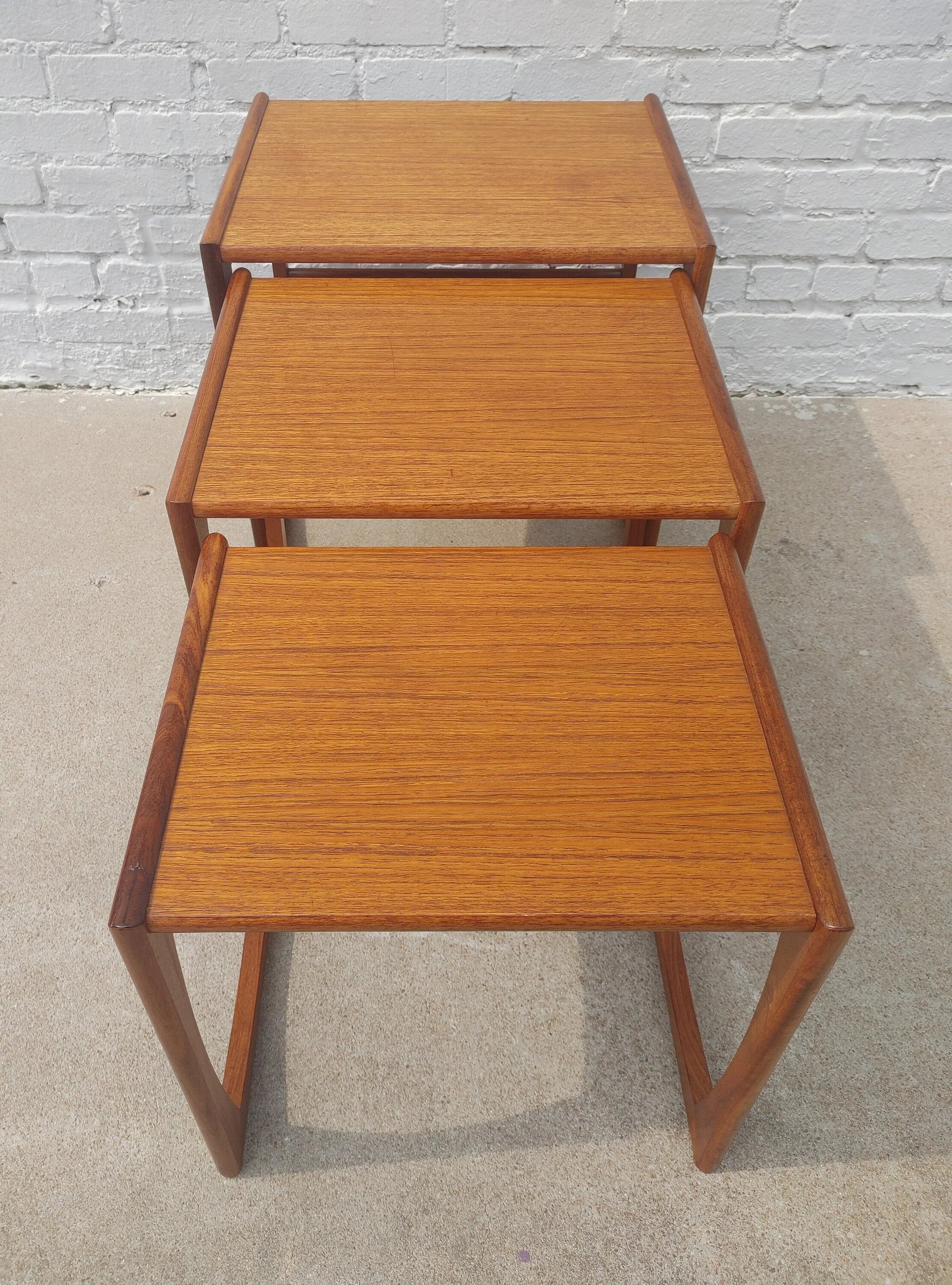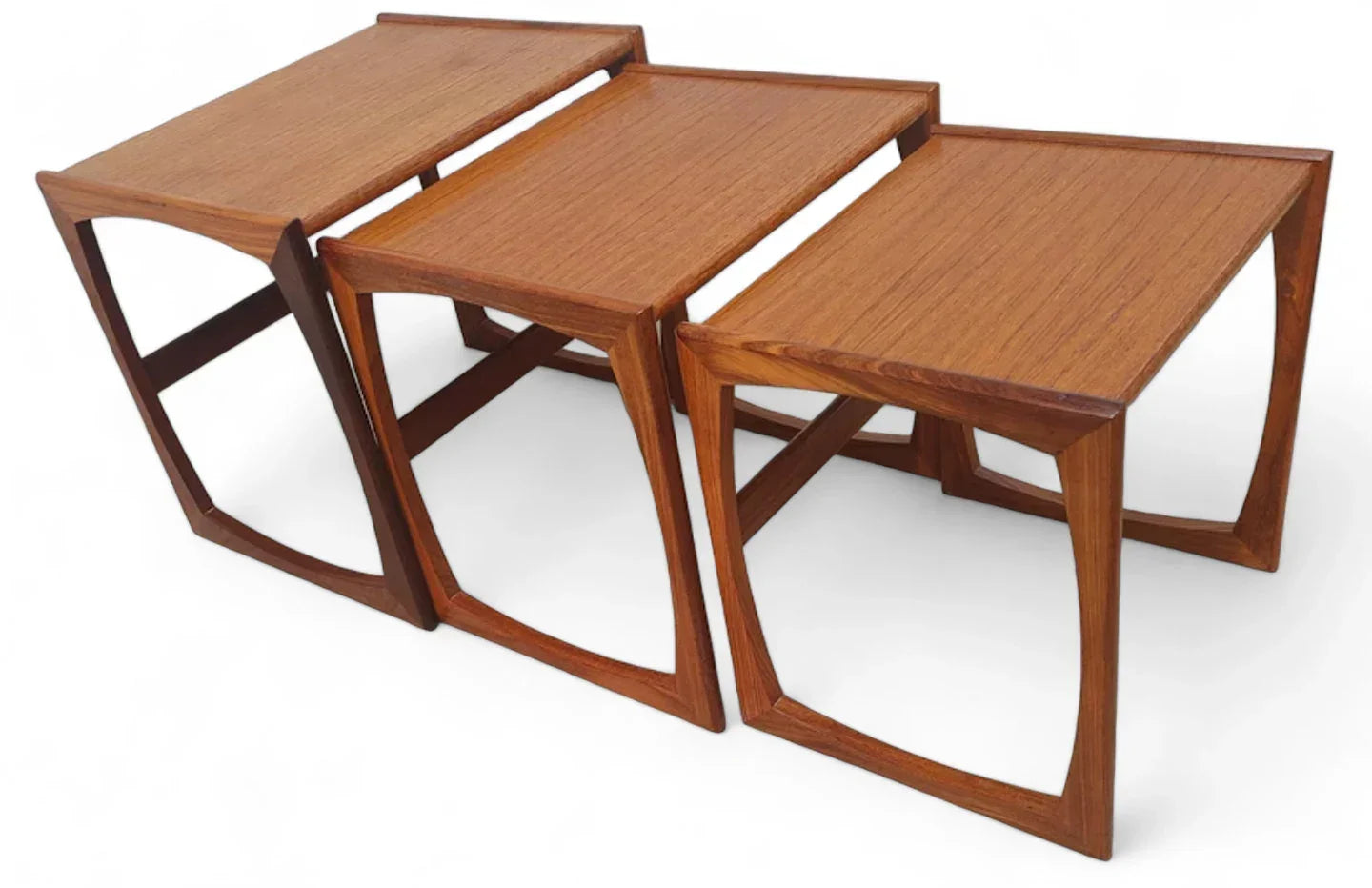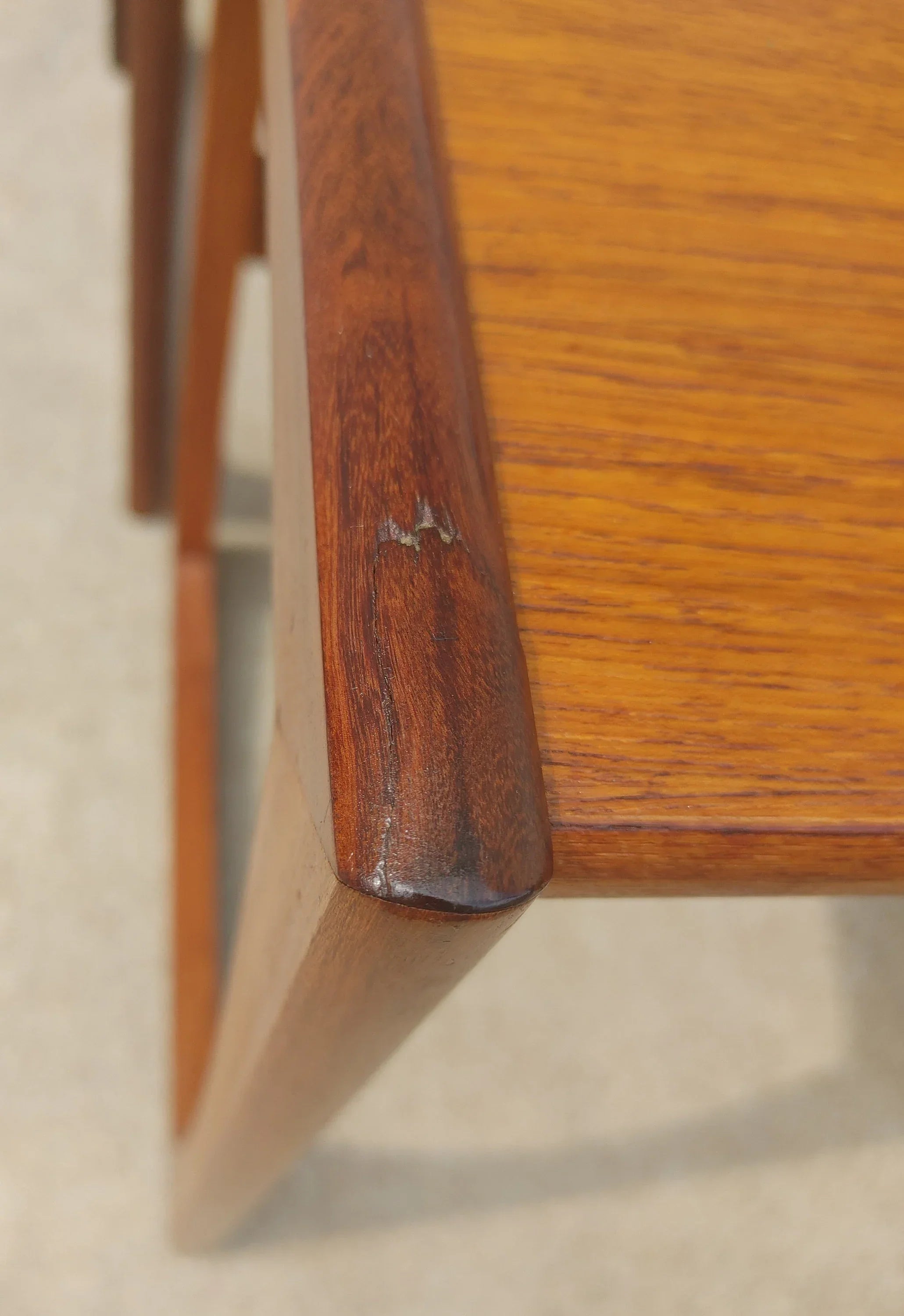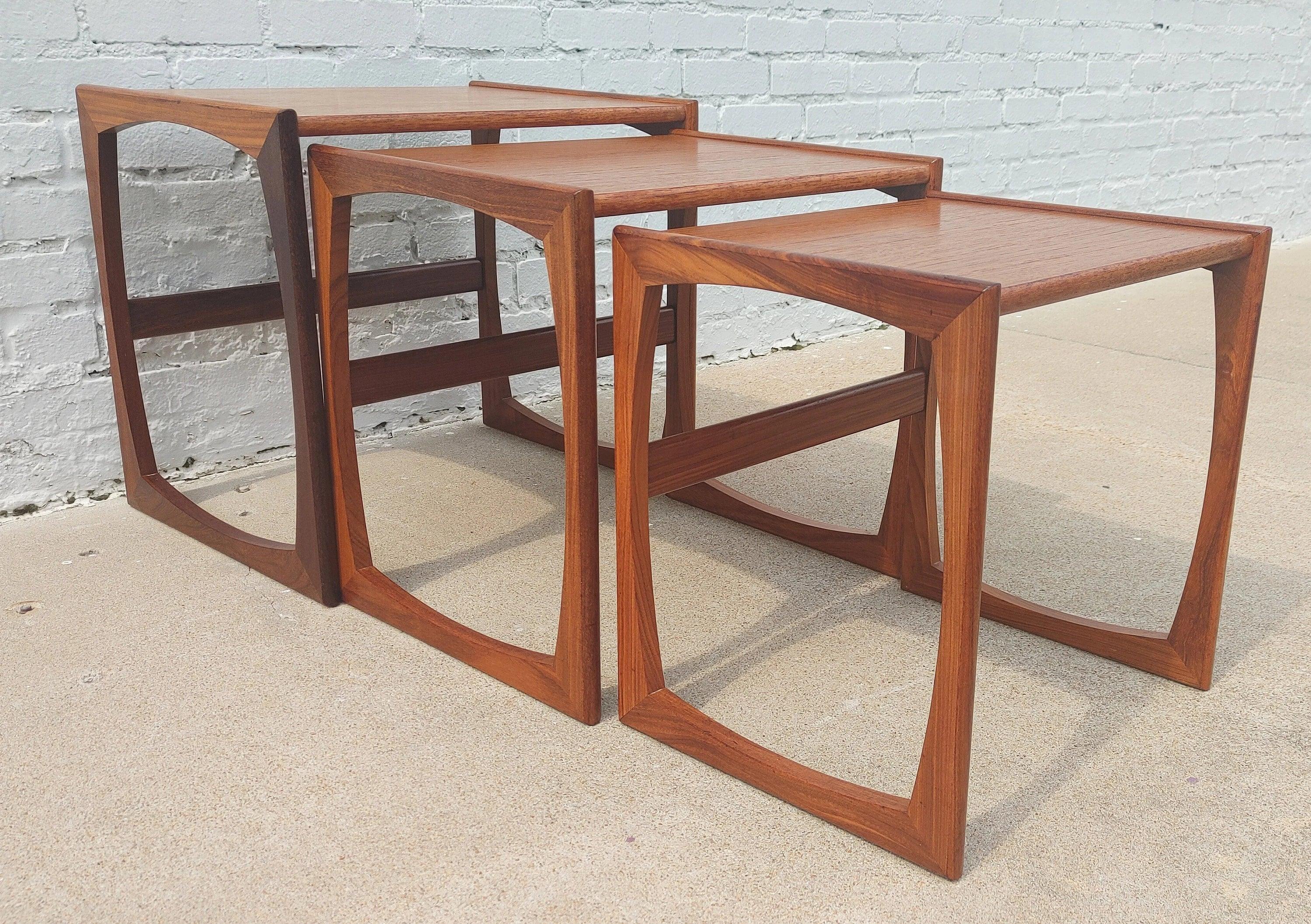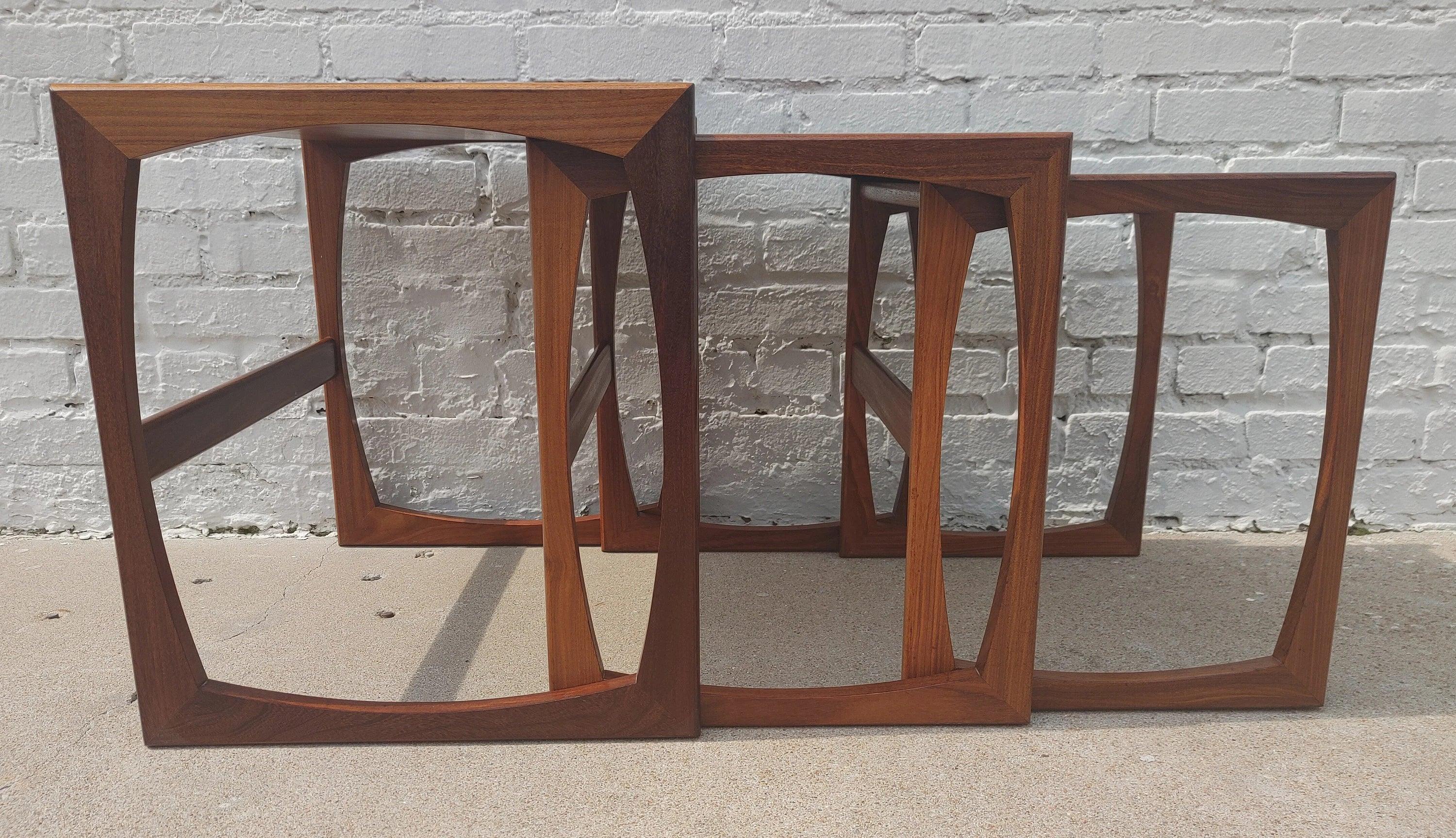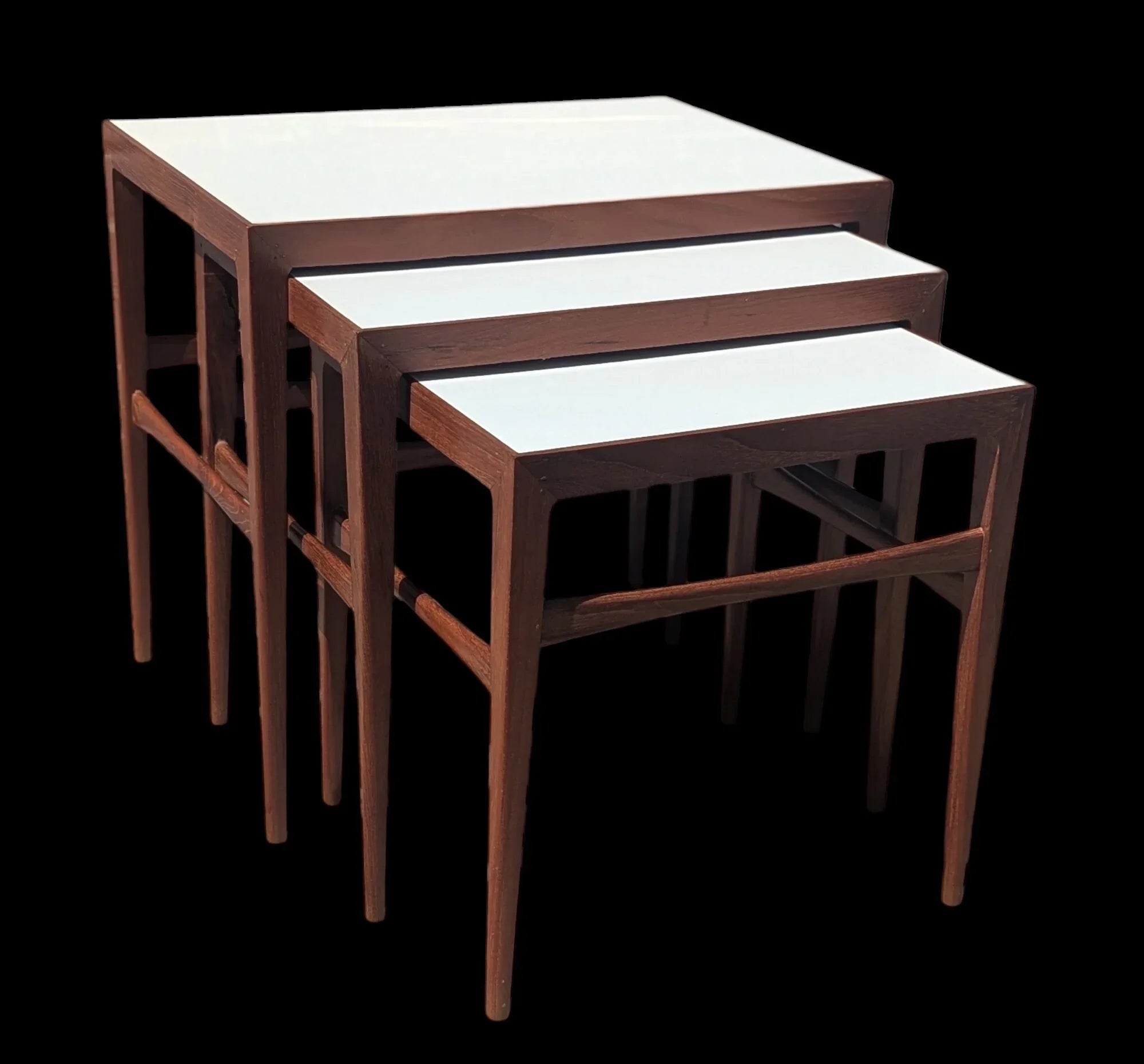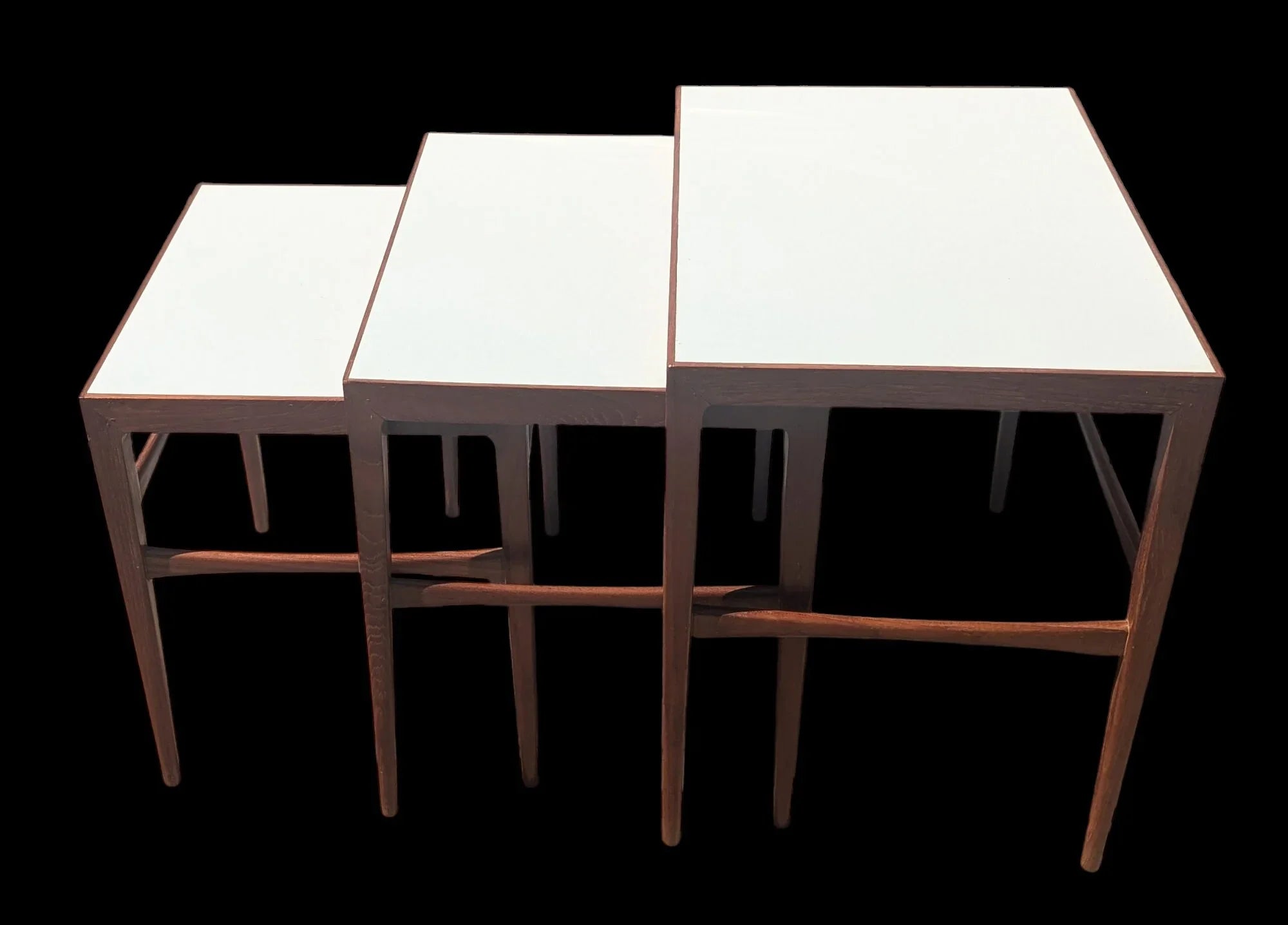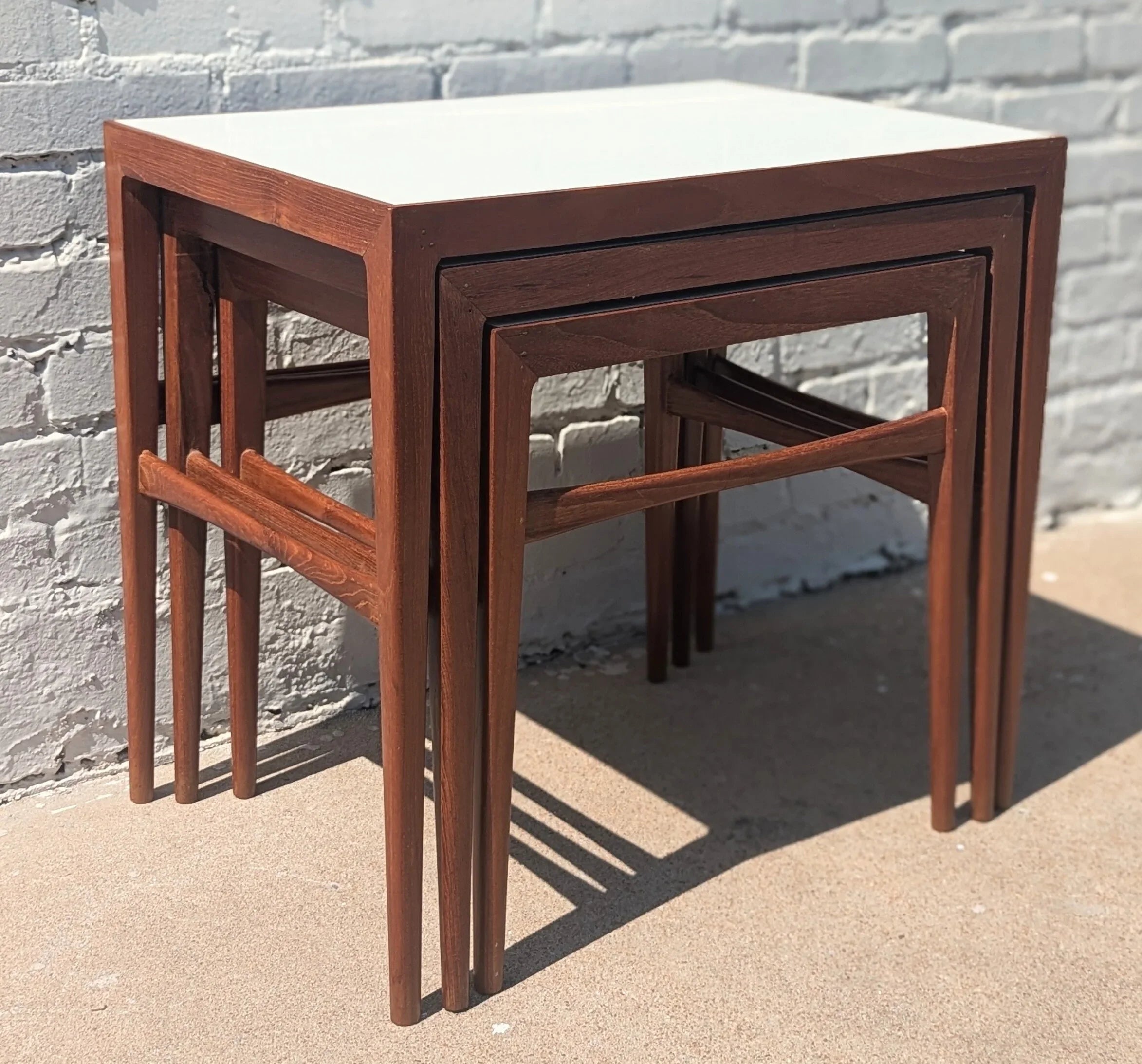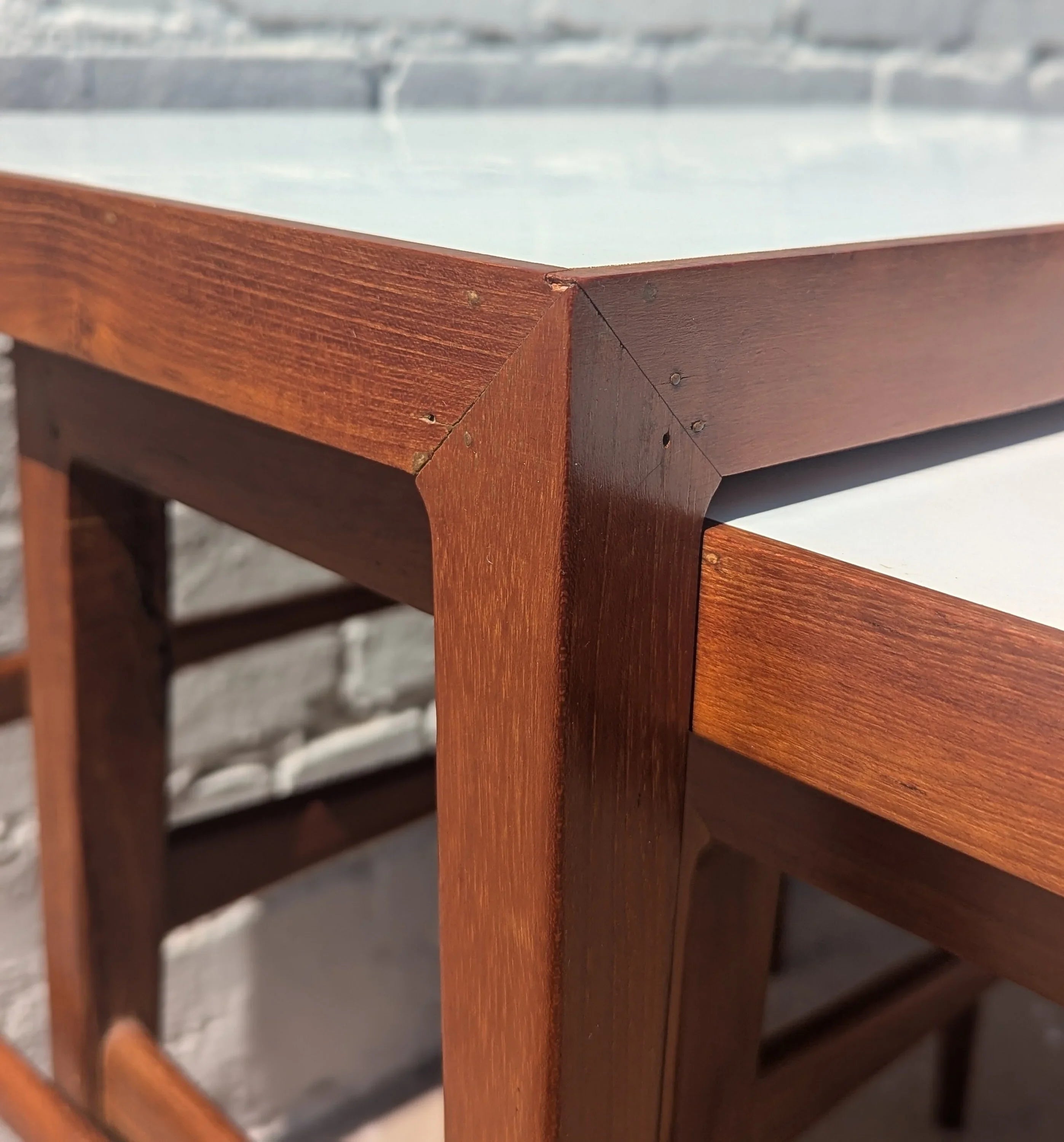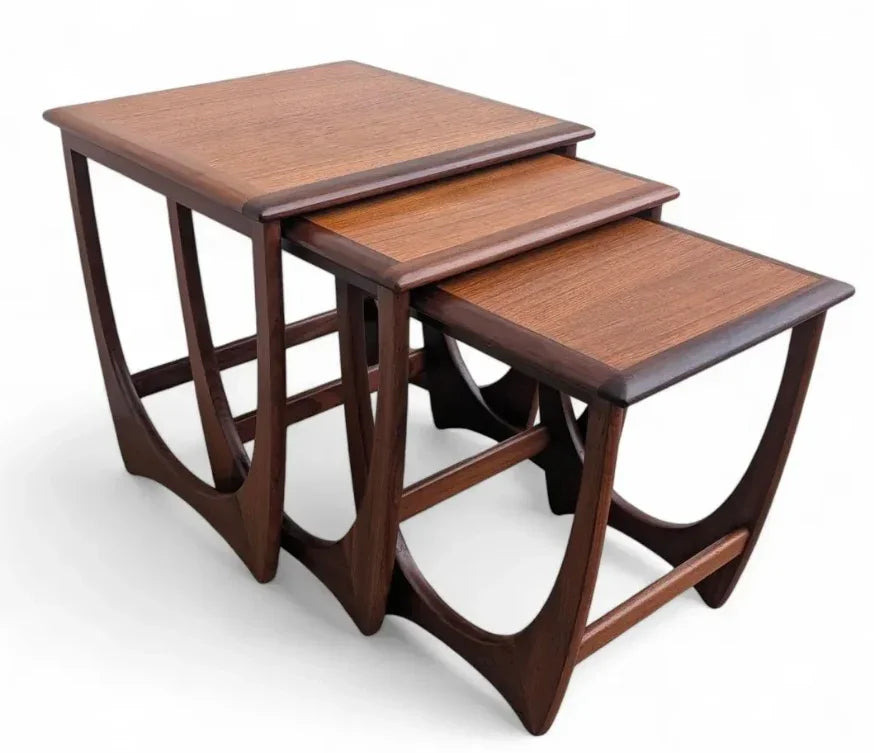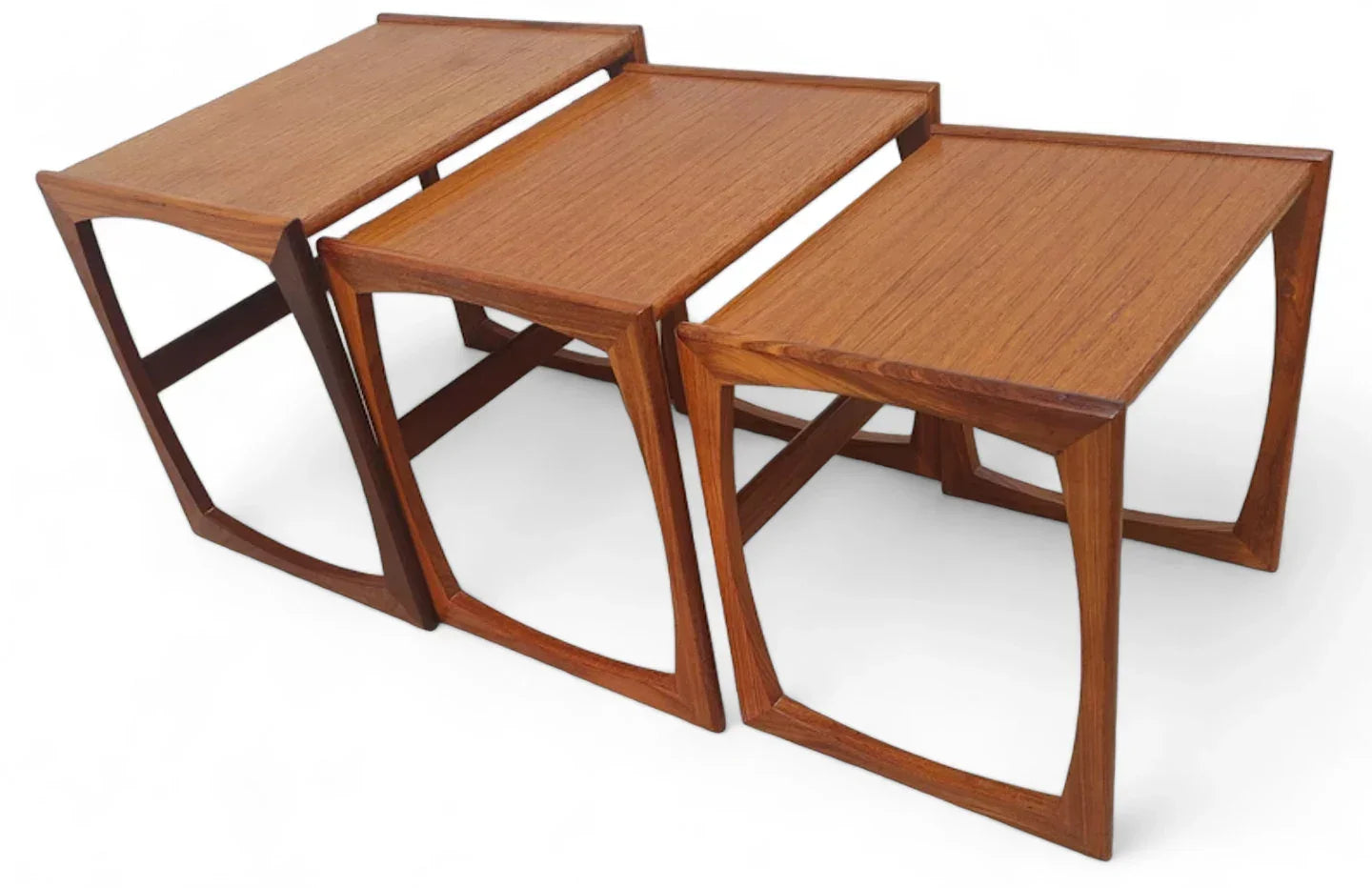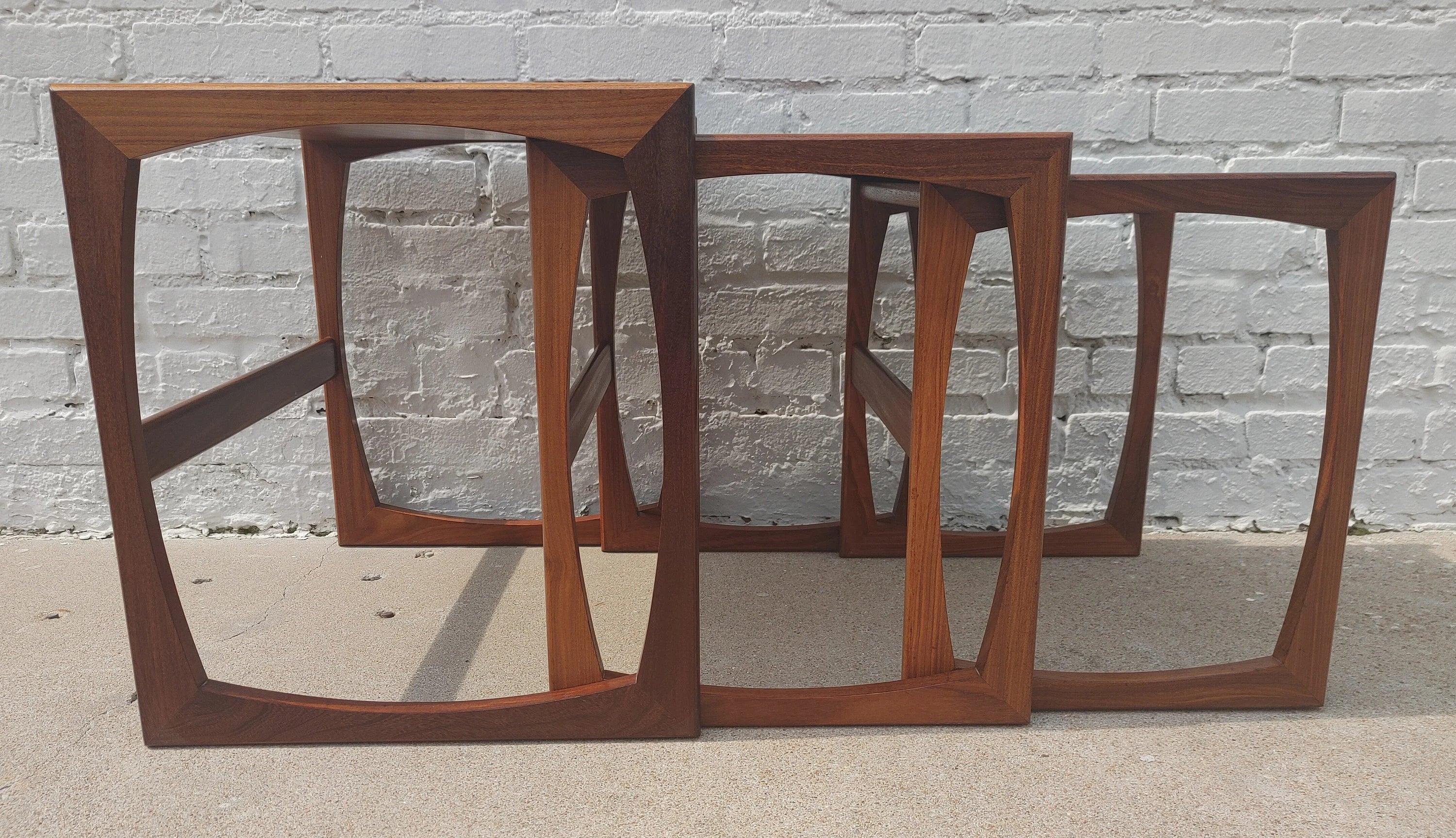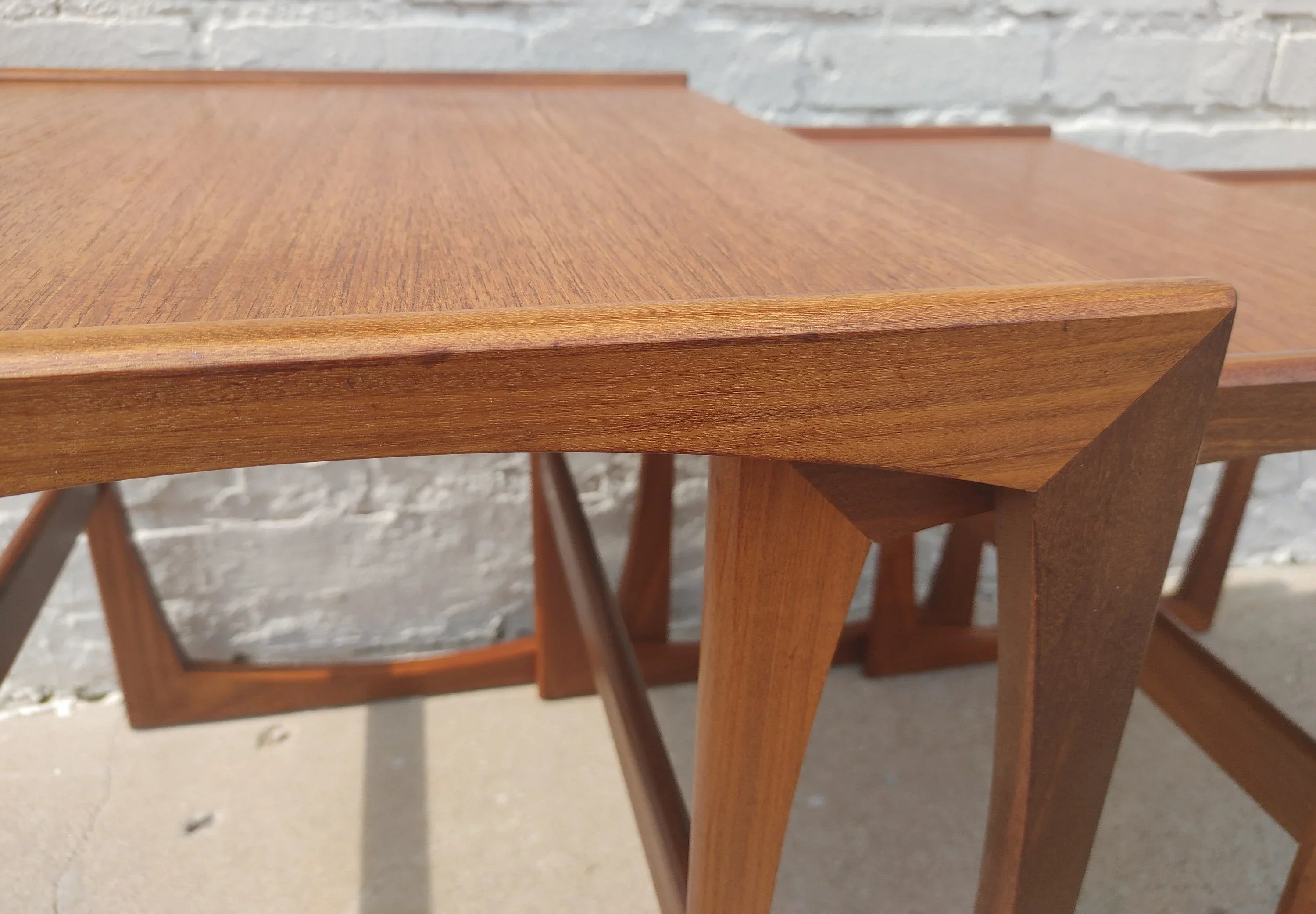Nesting Tables
Nesting Tables – Mid-Century Modern Space Savers with Sculptural Style
Mid-century modern nesting tables deliver maximum function in a minimal footprint. Designed primarily from the 1950s–1970s, these modular sets slide neatly together when you need floor space, then separate for entertaining, work-from-sofa moments, or layered styling beside a lounge chair. Whether you love warm teak, dramatic rosewood grain, or polished chrome and glass, nesting tables are the flexible icons your living room didn’t know it needed.
Why Designers and Collectors Love Nesting Tables
- Space efficiency: Three tables in the footprint of one—perfect for smaller rooms and apartments.
- Layered surfaces: Use the tallest for lighting, the mid for a drink tray, and the smallest for books or a plant.
- Mix-and-match styling: Split the set across the room for symmetry or cluster them for a sculptural effect.
- Material presence: Teak and rosewood bring warmth; chrome and glass add modern sheen; marble tops offer luxe contrast.
Hallmarks of Authentic Mid-Century Sets
- Tapered legs & fine joinery: A Danish hallmark that reads lightweight yet durable.
- Rich veneers & solid edges: Teak or rosewood veneer on stable substrates with solid edging for longevity.
- Thoughtful proportions: Graduated heights that nest smoothly and look intentional when staggered.
- Iconic finishes: Oil-rubbed teak, bookmatched rosewood, lacquer accents, smoked or clear glass, and brass/capped feet.
Shop Related Pieces from Vintage Vault Modern
While nesting tables are the star here, you can layer them with complementary mid-century surfaces and silhouettes. Explore these related, in-stock items:
- Mid Century Italian Modern Herringbone Dining Table
- Mid Century Modern Italian Modern Teak Coffee Table
- Mid Century Modern Italian Teak Dining Table
Pair your nesting set with a sculptural sofa or lounge chair and a complementary coffee table for depth and function.
Style Tips for Nesting Tables
- Balanced textures: If your nesting tables are chrome and glass, offset with a wool rug or linen upholstery. With teak or rosewood, add a metal or glass lamp for contrast.
- Zoning made easy: Pull an individual table to each seating position when guests arrive; reunite them when you want a cleaner layout.
- Layer lighting: Use the tallest table for a lamp, the middle for candles or a small plant, and the smallest for coasters and remotes.
- Wall color matters: Warm whites and soft grays spotlight wood grain; crisp white dramatizes chrome and glass.
Materials & Care
- Teak & Rosewood: Wipe with a dry cloth; periodically refresh with a high-quality oil or conditioner suitable for the finish. Learn more about teak’s properties at The Wood Database.
- Lacquered tops: Dust gently; avoid abrasives. For background on lacquer, see Britannica: Lacquer.
- Chrome & Glass: Use non-ammonia glass cleaner and microfiber; polish chrome lightly to maintain shine.
- Marble: Seal as needed and avoid acidic cleaners to prevent etching.
Designer Context
Nesting tables emerged alongside broader mid-century modern design, where architects and furniture makers prioritized clean lines and functional versatility. Danish makers favored tapered legs and warm woods, while Italian ateliers explored chrome, glass, and bold geometric cues—a spectrum that makes nesting sets easy to integrate with both Scandinavian minimalism and Italian glamour.
Complete the Look
- Teak Furniture – Warm, versatile foundations for living rooms and lounges.
- Rosewood Furniture – Striking grain and rich tone for statement pieces.
- Coffee Tables – Layer with nesting sets for entertaining.
- Side Tables – Alternate heights and materials for a curated look.
- Italian – Chrome, glass, and sculptural silhouettes.
- Danish – Tapered legs, light profiles, and timeless joinery.
Pro tip: For small spaces, choose a 3-piece set with a narrow footprint and stagger the tables beside a sofa to create a dynamic, layered surface area without committing to a large coffee table.
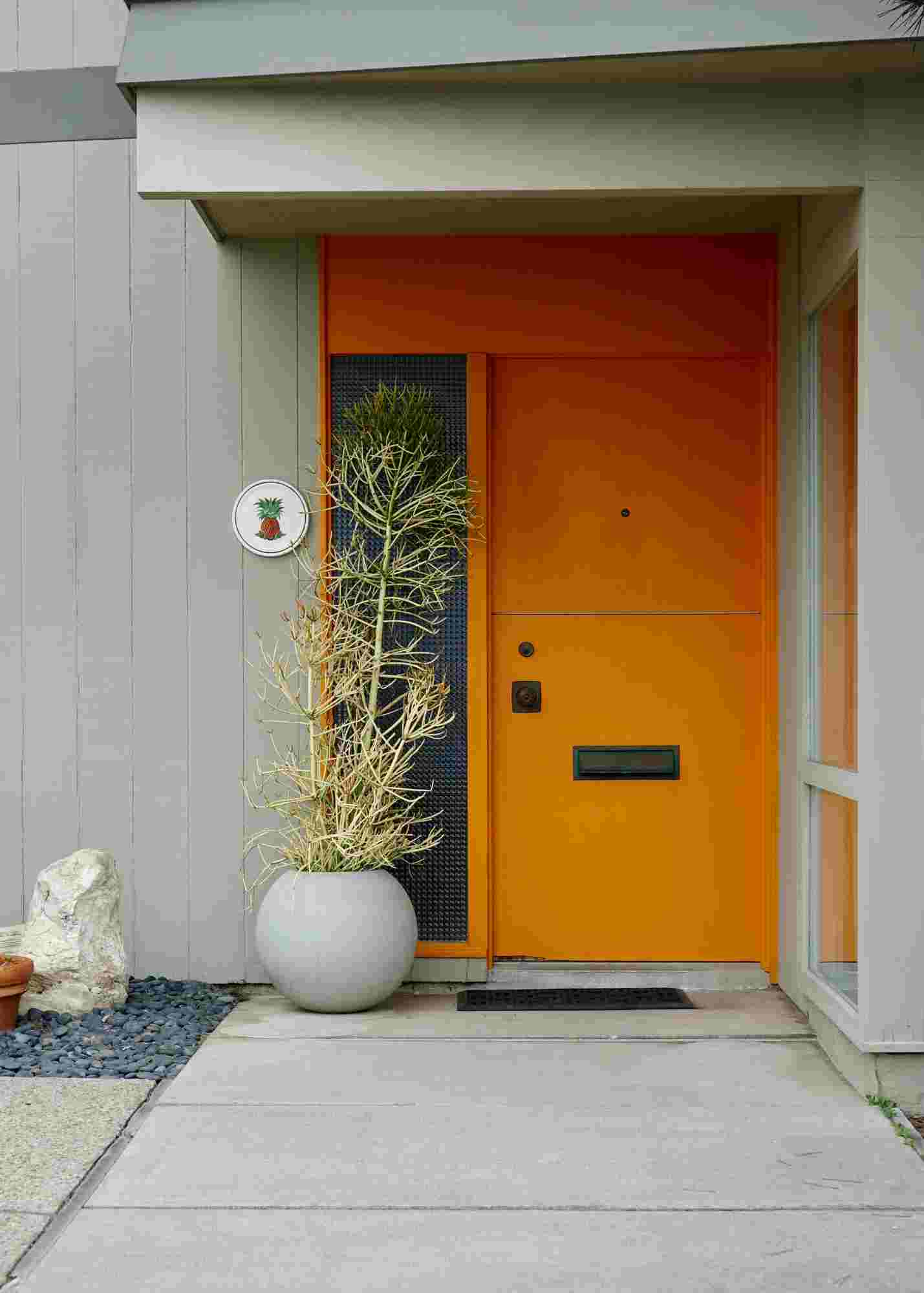
Unlock the Vault
Discover this week’s standout mid-century modern find — handpicked for collectors who know the difference.

